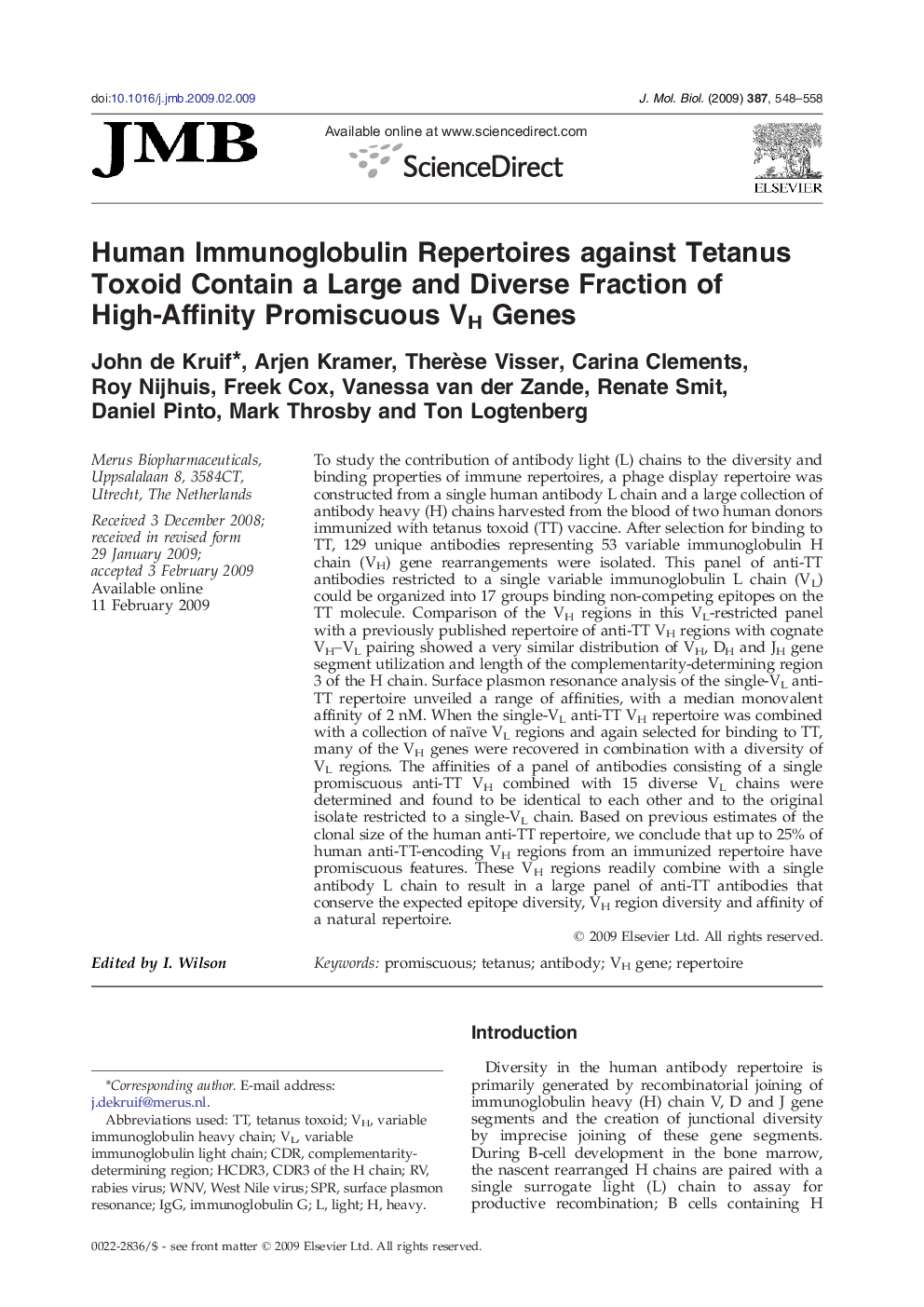| Article ID | Journal | Published Year | Pages | File Type |
|---|---|---|---|---|
| 2186649 | Journal of Molecular Biology | 2009 | 11 Pages |
To study the contribution of antibody light (L) chains to the diversity and binding properties of immune repertoires, a phage display repertoire was constructed from a single human antibody L chain and a large collection of antibody heavy (H) chains harvested from the blood of two human donors immunized with tetanus toxoid (TT) vaccine. After selection for binding to TT, 129 unique antibodies representing 53 variable immunoglobulin H chain (VH) gene rearrangements were isolated. This panel of anti-TT antibodies restricted to a single variable immunoglobulin L chain (VL) could be organized into 17 groups binding non-competing epitopes on the TT molecule. Comparison of the VH regions in this VL-restricted panel with a previously published repertoire of anti-TT VH regions with cognate VH–VL pairing showed a very similar distribution of VH, DH and JH gene segment utilization and length of the complementarity-determining region 3 of the H chain. Surface plasmon resonance analysis of the single-VL anti-TT repertoire unveiled a range of affinities, with a median monovalent affinity of 2 nM. When the single-VL anti-TT VH repertoire was combined with a collection of naïve VL regions and again selected for binding to TT, many of the VH genes were recovered in combination with a diversity of VL regions. The affinities of a panel of antibodies consisting of a single promiscuous anti-TT VH combined with 15 diverse VL chains were determined and found to be identical to each other and to the original isolate restricted to a single-VL chain. Based on previous estimates of the clonal size of the human anti-TT repertoire, we conclude that up to 25% of human anti-TT-encoding VH regions from an immunized repertoire have promiscuous features. These VH regions readily combine with a single antibody L chain to result in a large panel of anti-TT antibodies that conserve the expected epitope diversity, VH region diversity and affinity of a natural repertoire.
